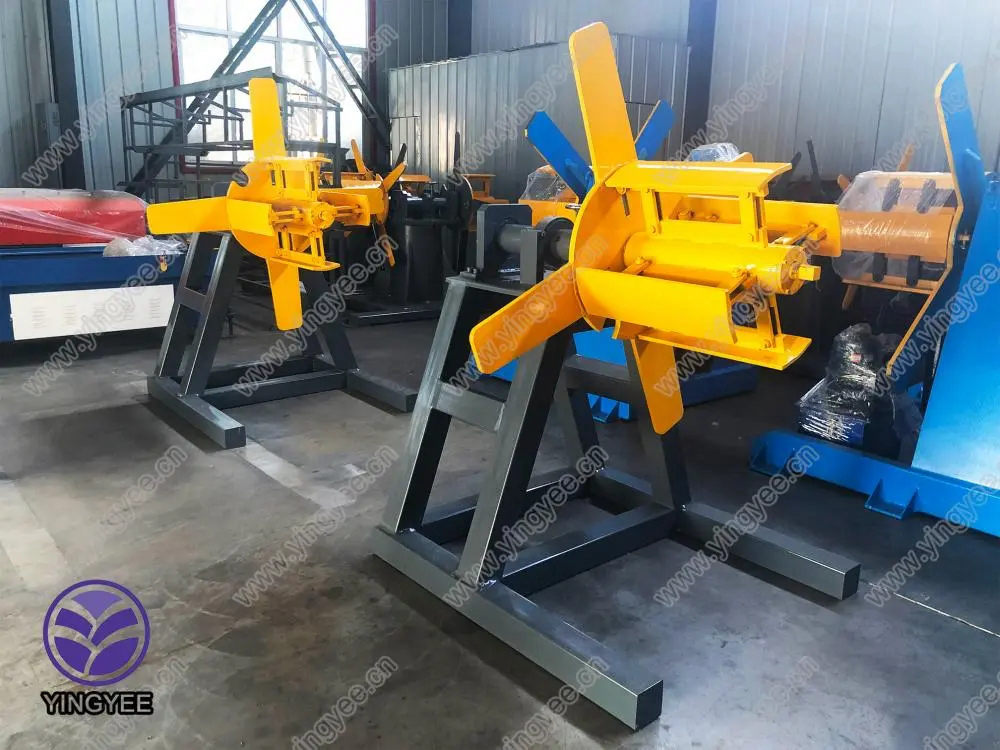
Understanding Stud Roll Forming Machines Functions and Applications
The stud roll forming machine is a specialized piece of equipment designed for the production of metal studs, which are essential components in the construction, furniture, and automotive industries. These machines are engineered to transform metal coils into specific profiles, yielding a variety of components that serve structural or aesthetic purposes. The versatility and efficiency of stud roll forming machines make them indispensable in modern manufacturing.
What is a Stud Roll Forming Machine?
A stud roll forming machine operates by feeding metal strips or coils through a series of rollers that progressively shape the metal into a desired form. The process begins with the raw material being uncoiled and fed into the forming section where the rollers are strategically positioned to bend and shape the metal. The designed engagement between the rollers ensures that the final product meets precise specifications regarding dimensions, thickness, and shape.
Key Components of Stud Roll Forming Machines
The essential parts of a stud roll forming machine include
1. Uncoiler This component holds and feeds the metal coil to the machine. The uncoiler must manage the tension of the coil accurately to prevent any deformities during the forming process.
2. Rollers The heart of the forming machine, these rollers are customized to shape the metal into the desired stud profile. The arrangement and design of the rollers influence the efficiency and quality of the final product.
3. Cutting Mechanism Once the studs have been formed to the correct length, a cutting mechanism is employed. This can be either a flying cutter, which cuts while the material is in motion, or a stationary cutter, which synchronizes with the forming line to achieve precision cuts.
4. Control System Modern stud roll forming machines come equipped with advanced control systems that automate and monitor each stage of production. This includes setting the speed, managing the cutting lengths, and ensuring overall operational efficiency.
Advantages of Using a Stud Roll Forming Machine

1. Efficiency Stud roll forming machines are capable of high-speed production, significantly reducing the time required to manufacture metal studs compared to traditional methods.
2. Precision The automated nature of these machines allows for greater accuracy in dimensions, ensuring that the end product conforms to specifications which is critical in construction and manufacturing applications.
3. Versatility Stud roll forming machines can be adapted to produce different styles and dimensions of studs, making them suitable for various applications, from lightweight internal walls to heavy-duty structures.
4. Cost-Effectiveness The ability to produce large volumes of studs in a continuous process not only saves time but also reduces labor costs and material waste, leading to overall cost savings.
Applications of Stud Roll Forming Machines
Studs produced by these machines are widely used in
- Construction Metal studs are a staple in the framing of buildings, offering strength and longevity compared to traditional wooden framing.
- Furniture Manufacturing Metal studs are also used in creating furniture frames, especially in commercial spaces where durability is paramount.
- Automotive Industry In vehicles, studs may be utilized in various structural and aesthetic components, providing the necessary strength while keeping the weight minimum.
Conclusion
Stud roll forming machines play a pivotal role in contemporary manufacturing processes, particularly in producing metal studs that are integral to various industries. Their efficiency, precision, and adaptability make them a key investment for manufacturers looking to enhance productivity and quality in their operations. As technology continues to advance, the capabilities of stud roll forming machines will likely expand, leading to even more innovative applications across different sectors.